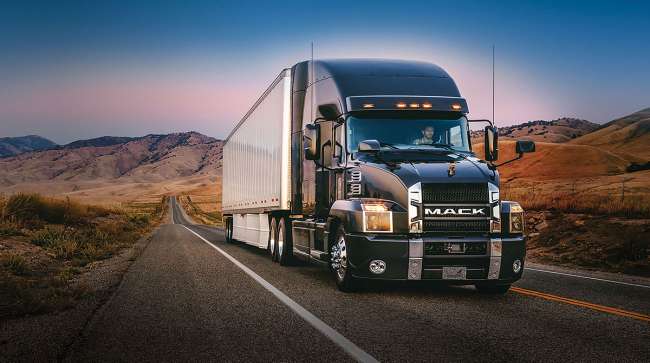Senior Reporter
Bendix Updates ADAS Technology With Eye on the Future

Bendix Commercial Vehicle Systems announced the next generation of both its Wingman Fusion advanced driver assistance system and its BlindSpotter side object detection system.
At the same time, Intellipark said its upcoming electronic parking brake control is in fleet trials.

The three technologies are intended to create a foundation of software, sensors and system integration for the eventual autonomous future in commercial trucking, according to the Elyria, Ohio-based company.
Bendix is a unit of Munich-based Knorr-Bremse Group.
“Integration, connectivity and performance really do drive the future. ADAS systems today help drivers and fleets in mitigating crashes, and help us on the pathway to the autonomous future, and retrofitting helps get there faster,” said Fred Andersky, Bendix’s director of customer solutions for controls.
Intellipark and BlindSpotter are designed as retrofits, Andersky said. “It is going to be a new type of technician and a new type of driver as the future evolves. It is going to be more than just sensor fusion. System fusion is also critical — steering working with braking, braking working with engine management, all of them working together.”
A number of the new features of Wingman Fusion are the result of software advancements, so current system users will be able to upgrade and unlock the new capabilities without having to purchase new hardware.
The next-generation enhancements enable Fusion to provide full braking power on the tractor (compared with the two-thirds power previously possible) along with pulsing air back to the trailer to provide trailer braking no matter whether the trailer has an anti-lock braking system-trailer roll stability program unit. Combined with improved sensor and data analysis, this means that in many emergency situations, the system can reduce a vehicle’s speed by as much as 50 mph.
Big news: The new Bendix BlindSpotter Side Object Detection System features an upgraded radar unit and the ability to integrate with Bendix’s flagship advanced #driverassistance system, Bendix Wingman Fusion: https://t.co/alOhZzTzhg #trucking pic.twitter.com/Pos9u3LjAT — Bendix (@Bendix_CVS) September 5, 2018
With the new multilane automatic emergency braking feature, if Fusion is applying the brakes due to a vehicle in the lane ahead and the truck driver switches to an adjacent lane, the system will continue applying the brakes if it detects another car ahead in the new lane.
The ACB Auto-Resume (active cruise with braking) functionality re-engages cruise control after Fusion brakes the vehicle above a certain speed threshold.
Most major North American truck brands offer Fusion as standard on their highway tractors, including Kenworth Truck Co.’s T80 model, Peterbilt Motors Co.’s 579 model. Both truck makers are units of Paccar Inc.
At Mack Trucks, it is on the Anthem.
Bendix’s Intellipark electronic parking brake is now moving into fleet trials, with an expected launch next year: https://t.co/V0UvwdLhoB #trucking #fleetsafety pic.twitter.com/P4nUtjwK96 — Bendix (@Bendix_CVS) September 5, 2018
Volvo Trucks North America offers Volvo Active Driver Assist, which is based on Wingman Fusion, as standard on its VNL and VNR series tractors.
Mack and VTNA are Volvo Group brands.
On Navistar Inc.’s International brand highway tractors, Fusion is an option over the standard Wingman Advanced system.
Not all truck manufacturers may offer all the new features on Fusion.
BlindSpotter uses a new side-mounted radar unit, typically installed on the passenger side of the vehicle but also available for driver-side mounting to alert drivers to vehicles or objects in adjacent lanes.
When connected to the vehicle’s J1939 controller area network, its new radar operates over a significantly wider field of view than the previous version, allowing it to see farther toward both the front and back of a combination or single-unit vehicle — up to 2.5 times farther in each direction compared with the previous generation of BlindSpotter.
When connected to the vehicle’s controller area network, the new BlindSpotter also provides a wider, 150-degree range of coverage capable of detecting objects up to 20 feet in front of and 20 feet behind the BlindSpotter radar. The coverage zone extends up to 10 feet to the right of the vehicle.
BlindSpotter minimizes false alerts by operating in two modes: highway speeds and lower speeds. When connected to the controller area network and at highway speeds, the sensor filters out stationary objects like guardrails; the slow-speed warning mode — active at less than 20 mph such as during city driving or in parking lots — narrows the range for alerts and does not filter out stationary targets or infrastructure.
Meanwhile, Intellipark, scheduled to become available in 2019, is intended to help prevent rollaway and runaway crashes by automatically setting the brakes if the driver exits the vehicle while it is not parked. Beyond rollaway mitigation, the system uses information available on the vehicle network to allow the park brake to be released only when an authorized driver is in full control of the vehicle.
Intellipark’s features also include Trailer Auto-Park Release, which can automatically release trailer brakes when the vehicle is moving. The Park-at-Speed feature helps the driver to maintain control if the parking brakes are applied while driving. Plus, the system delivers a more durable and ergonomic interface, which is pleasing to drivers.

